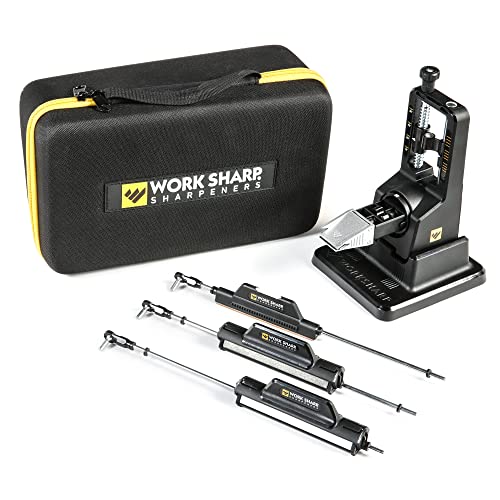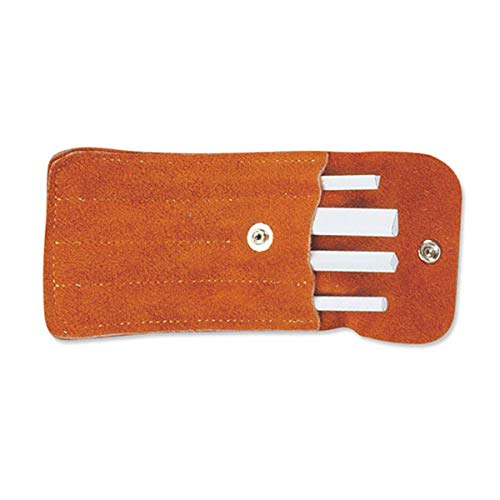
A whittling knife is a valuable tool for any woodworker or hobbyist. However, over time, the blade can become dull and less effective. Sharpening the knife with a stone is a traditional and effective method of restoring its sharpness.
To begin the sharpening process, you will need a sharpening stone. Look for a stone with a fine grit, as this will provide the best results for sharpening your whittling knife. Before you start, it’s important to ensure that your stone is clean and free from any debris or contaminants.
Once your stone is ready, it’s time to sharpen the knife. Hold the knife’s blade against the stone at a 20-degree angle. Use both hands to apply gentle pressure and move the blade back and forth across the stone. This process, known as stropping, will gradually wear away the dull edge and reveal a sharp blade.
Continue stropping the knife until you can feel a burr forming on the opposite side of the blade. This is an indication that the blade is becoming sharp. Flip the knife over and repeat the process on the other side until you achieve a razor-sharp edge.
Finally, once you are satisfied with the sharpness of your whittling knife, wipe off any residue from the stone and clean the blade with a cloth. Remember to always exercise caution when handling sharp objects, and be sure to store your freshly sharpened knife in a safe and secure place.
By following these simple steps, you can easily sharpen your whittling knife with a stone, ensuring that it remains a reliable tool for all your woodcarving projects.
Overview of whittling knives
Whittling knives are essential tools for woodworking enthusiasts who enjoy carving intricate designs and shapes out of various materials such as wood or soapstone. These knives are specifically designed with a sharp and narrow blade, allowing for precise cuts and intricate detailing.
Whittling knives typically feature a fixed blade that is either straight or slightly curved, providing different options for carving and shaping. The blades are made from high-quality steel, ensuring durability and longevity even with frequent use.
One of the key features of a whittling knife is its handle. The handle is ergonomically designed and made from comfortable materials such as wood or rubber, allowing for a secure and comfortable grip during carving sessions. The handle may also have finger grooves or texture for enhanced control and precision.
Whittling knives come in various sizes, ranging from small and compact knives for fine detailing to larger knives for rough shaping and removing larger sections of material. The choice of size depends on the specific project and the user’s preferences.
It is important to note that whittling knives require regular maintenance and sharpening to maintain their functionality and effectiveness. Dull blades can be dangerous and inefficient when carving, so it is essential to invest time in proper sharpening techniques using a sharpening stone or other sharpening tools.
Overall, whittling knives are versatile and reliable tools that enable woodworkers and carving enthusiasts to bring their creative visions to life. With their sharp blades and comfortable handles, these knives provide a seamless and enjoyable carving experience for beginners and experts alike.
Benefits of using a stone for sharpening
When it comes to sharpening your whittling knife, using a stone is a traditional and effective method. There are several benefits to using a stone for sharpening:
1. Precision
A sharpening stone provides the level of precision needed to achieve a truly sharp edge on your whittling knife. The abrasive surface of the stone allows you to control the angle and pressure applied, resulting in a fine and accurate edge.
2. Versatility
A stone can be used for different types of blades and not just limited to whittling knives. You can use the stone to sharpen a variety of tools such as pocket knives, chisels, axes, and scissors. This makes it a versatile tool for all your sharpening needs.
3. Durability
A sharpening stone, when properly cared for, can last a long time. It doesn’t require frequent replacement like other sharpening tools such as sandpaper or honing guides. Investing in a good quality stone ensures that you have a reliable and durable sharpening tool for years to come.
4. Cost-effective
Compared to other high-tech sharpening methods or gadgets, a stone is a cost-effective option. Stones are generally affordable and can provide excellent results when used correctly. It is a one-time investment that can save you money in the long run, as you won’t need to constantly replace or upgrade your sharpening equipment.
In conclusion, using a stone for sharpening your whittling knife offers precision, versatility, durability, and cost-effectiveness. It is a traditional and reliable method that allows you to achieve a fine edge and maintain the performance of your tool for a long time.
Step-by-step guide to sharpening a whittling knife with a stone
Sharpening a whittling knife with a stone is a skill that every whittler should learn. A dull knife can be frustrating to work with and can also be dangerous. Here’s a step-by-step guide to help you sharpen your whittling knife using a stone:
- Start by gathering the necessary tools and materials. You will need a sharpening stone, water or honing oil, a towel or cloth, and your dull whittling knife.
- Prepare the sharpening stone by soaking it in water for about 10 minutes or applying a few drops of honing oil. This will help lubricate the stone and make it easier to sharpen your knife.
- Place the sharpening stone on a stable surface, such as a table or workbench. Make sure it’s secured in place and won’t move while you’re sharpening your knife.
- Hold your whittling knife firmly in one hand, with the blade facing away from you.
- With the other hand, place the edge of the blade against the sharpening stone at a 20-degree angle. This angle will vary depending on the type of knife you have, so it’s best to check the manufacturer’s recommendations.
- Using gentle pressure, slowly slide the blade across the stone, moving from the base to the tip. Maintain a consistent angle and make sure the entire edge of the blade comes into contact with the stone.
- Repeat this motion several times, alternating sides of the blade, until you start to see a burr or a thin wire edge forming on the opposite side of the blade. This indicates that the blade is being properly sharpened.
- Carefully wipe the blade with a towel or cloth to remove any debris or excess oil.
- Test the sharpness of your knife by gently running your finger along the edge. Be extremely careful and avoid pressing too hard to prevent any accidental injuries.
- If the knife still feels dull, repeat the sharpening process until you achieve the desired level of sharpness.
- Once you’re satisfied with the sharpness, clean the whittling knife and stone, and store them in a safe place for future use.
With regular practice, sharpening a whittling knife with a stone will become easier and yield better results. It’s an essential skill that will enhance your whittling experience and ensure your safety while working with sharp tools.
Maintenance tips for a sharp whittling knife
- Keep your whittling knife clean and dry: After each use, make sure to clean your knife thoroughly with soap and water. Dry it completely before storing it to prevent rust and corrosion.
- Store your knife properly: Always keep your whittling knife in a sheath or a blade guard to protect it from damage and accidents. Avoid storing it in a moist or humid environment.
- Regularly oil the blade: Apply a thin layer of oil to the blade to prevent rust and to keep it functioning smoothly. Use a food-safe oil such as mineral oil or vegetable oil.
- Avoid excessive force: Whittling knives are designed for delicate carving, so avoid using excessive force or applying too much pressure. Let the sharpness of the knife do the work for you.
- Sharpen it regularly: To maintain a sharp edge, it is important to regularly sharpen your whittling knife. Use a sharpening stone or honing guide to restore the blade’s sharpness.
- Inspect the knife before use: Before starting any carving project, inspect your whittling knife to ensure that the blade and handle are in good condition. Check for any signs of wear or damage.
- Be cautious and take breaks: Whittling can be a physically demanding activity. Take regular breaks to rest your hand and avoid any fatigue or strain. Always exercise caution and focus while using a sharp knife.
- Keep your knife away from children: Whittling knives are sharp tools and should be kept out of reach of children. Store them in a safe and secure place to prevent any accidents.










